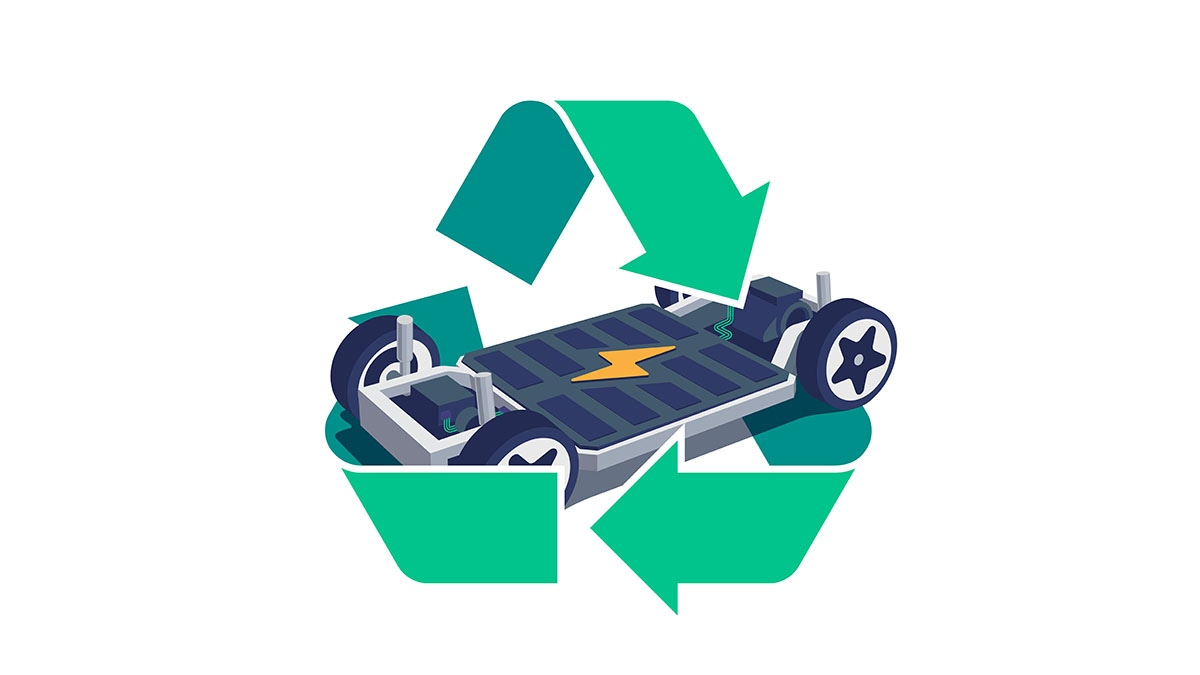As the global push for sustainable energy accelerates, electric vehicles (EVs) have become a cornerstone of the green revolution. With millions of EVs hitting the roads, their lithium-ion batteries—essential for powering everything from cars to portable chargers—are driving a surge in demand for critical minerals like lithium, cobalt, and nickel. However, a looming crisis threatens to undermine this progress: recycling EV batteries is far more complex and resource-intensive than most people realize. This blog explores the technical, economic, and environmental challenges of EV battery recycling and why the industry must act swiftly to address them.
The Scale of the Challenge
The International Energy Agency (IEA) projects that by 2030, over 30 million EVs will be sold annually, each powered by a lithium-ion battery. These batteries, unlike the smaller cells in portable chargers, are massive, complex systems containing thousands of individual cells. A single EV battery pack can weigh over 1,000 pounds and contains a mix of metals, plastics, and hazardous chemicals. While recycling is often touted as a solution to resource scarcity, only about 5% of lithium-ion batteries globally are currently recycled, according to a 2023 report by the International Council on Clean Transportation (ICCT).
The sheer volume of batteries reaching end-of-life (EOL) creates a logistical nightmare. Unlike traditional lead-acid batteries, which have a well-established recycling infrastructure with recovery rates exceeding 95%, lithium-ion batteries pose unique challenges due to their chemical complexity and safety risks. Without scalable solutions, the world risks a pile-up of toxic waste, undermining the environmental benefits of EVs.

Technical Hurdles in Battery Recycling
Recycling EV batteries is a technically demanding process that involves multiple stages: collection, disassembly, material separation, and recovery. Each stage presents significant obstacles.
- Collection and Safety Risks: EV batteries are classified as hazardous waste due to their flammable electrolytes and high-voltage components. Mishandling can lead to fires, toxic gas emissions, or explosions. For comparison, recycling a portable charger is relatively straightforward, as its smaller size and simpler design reduce risks.
- Disassembly Complexity: Unlike a portable charger, which can be manually disassembled with basic tools, EV battery packs are intricate assemblies of modules, cooling systems, and wiring. Automated disassembly is still in its infancy, and manual processes are labor-intensive and costly. Moreover, battery designs vary widely across manufacturers, complicating standardization efforts.
-
Material Recovery Challenges: The goal of recycling is to recover valuable materials like lithium, cobalt, and nickel for reuse. However, current methods—primarily pyrometallurgy and hydrometallurgy—have significant drawbacks. Pyrometallurgy, which involves smelting batteries at high temperatures, is energy-intensive and produces toxic emissions. Hydrometallurgy, a chemical leaching process, is more efficient but generates large volumes of wastewater. Both methods struggle to recover lithium economically, with recovery rates often below 50%.

Economic Barriers
The economics of EV battery recycling are daunting. The high cost of collection, transportation, and processing often outweighs the value of recovered materials. For instance, while cobalt and nickel are valuable, lithium prices fluctuate, and the cost of extracting it from used batteries can exceed that of mining new lithium. This economic disincentive discourages investment in recycling infrastructure.
Moreover, the lack of standardized battery designs complicates economies of scale. In contrast, portable chargers, which often use standardized lithium-ion cells, benefit from more streamlined recycling processes. Without global cooperation and regulatory incentives, recycling EV batteries risks becoming a financial black hole.
Environmental and Ethical Concerns
The environmental footprint of EV battery recycling is another critical issue. Pyrometallurgical processes consume vast amounts of energy, often derived from fossil fuels, negating some of the carbon savings from EV adoption. Hydrometallurgical processes, while less energy-intensive, produce toxic sludge that must be carefully managed to avoid environmental contamination.
Ethically, the reliance on mined materials for batteries raises questions about sustainability. Cobalt mining, for example, is often linked to human rights abuses in regions like the Democratic Republic of Congo. Recycling could reduce this dependency, but only if recovery rates improve significantly. Otherwise, the growing demand for EV batteries—and even portable chargers—will continue to drive environmentally and socially harmful mining practices.

Emerging Solutions and Innovations
Despite these challenges, promising innovations are emerging. Direct recycling, a newer method, aims to recover battery materials without breaking them down into their elemental forms, preserving their chemical structure and reducing energy use. Companies like Redwood Materials and Li-Cycle are pioneering this approach, with pilot projects showing recovery rates above 90% for some materials.
Battery design is also evolving. Some manufacturers are exploring modular designs that simplify disassembly. Additionally, second-life applications—repurposing EV batteries for energy storage or portable chargers—could extend their lifespan before recycling, reducing waste.
Policy interventions are critical to scaling these solutions. Governments in Europe and China are already implementing extended producer responsibility (EPR) regulations, requiring manufacturers to manage their batteries’ EOL. The U.S. lags behind but is beginning to explore similar frameworks.

The Road Ahead
The EV battery recycling crisis is a multifaceted problem that demands coordinated action from governments, manufacturers, and researchers. Without significant advancements, the environmental promise of EVs could be overshadowed by mountains of unrecycled batteries. Key steps forward include:
- Investment in Technology: Scaling up direct recycling and other low-impact methods to improve material recovery rates.
- Policy Support: Implementing global EPR frameworks to hold manufacturers accountable for EOL management.
- Public Awareness: Educating consumers about the importance of recycling not just EV batteries but also smaller devices like portable chargers.
The transition to a circular economy for EV batteries is not just a technical challenge—it’s a moral imperative. As EVs and portable chargers become ubiquitous, the industry must prioritize sustainable practices to prevent a waste crisis that could tarnish the green revolution.

Conclusion
Recycling EV batteries is far harder than recycling smaller devices like portable chargers, but the stakes are exponentially higher. The technical complexity, economic barriers, and environmental risks demand urgent attention. By investing in innovation and fostering global cooperation, the industry can turn this crisis into an opportunity to build a truly sustainable future. The clock is ticking—failure to act could leave us with a legacy of toxic waste instead of a greener planet.
Recommend Reading: How Smart Charging and Proactive Maintenance Can Extend EV Battery Life








Share:
NEMA 5-15 vs 6-20 vs 14-50: Choosing the Right Plug for EV Charging Needs
How to Plan a Smooth EV Road Trip?